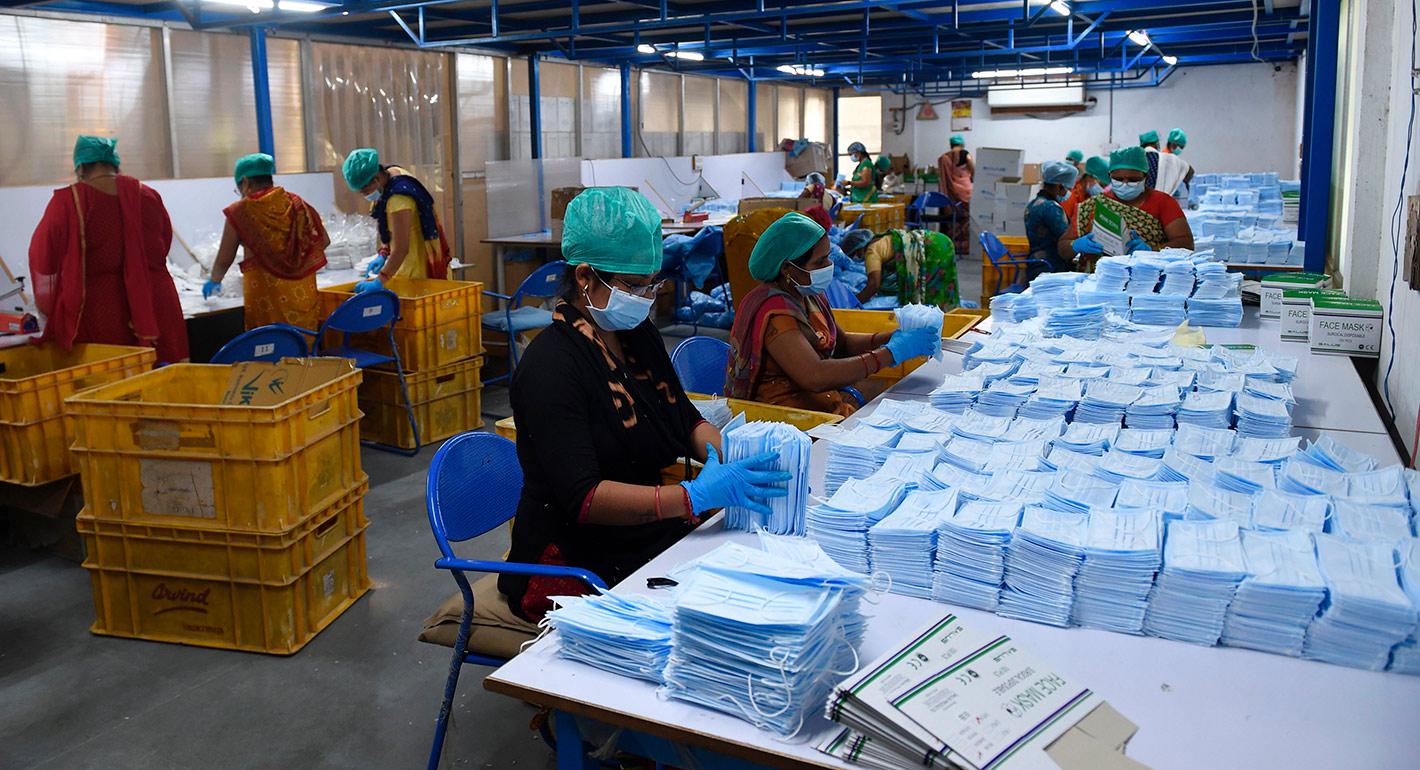The number of confirmed coronavirus infections in India continues to rise rapidly, reaching 276,583 as of June 10. Yet even in March, during the national outbreak’s earliest stages, reports warned of a shortage of personal protective equipment (PPE), ventilators, and other essential medical supplies.
The coronavirus pandemic has brought India’s public health system under heightened scrutiny. India is no stranger to public health emergencies, and experts have warned that climate change has raised the global risks of infectious disease. It is no longer tenable for India to face those risks without investment in a national public health stockpile.
The Value of Stockpiles
Stockpiles ensure that countries can deal with the disruption caused by a public health emergency without depending on imports, at least in the short term. While a stockpile would not necessarily suffice to fully respond to a crisis on the scale of the coronavirus pandemic, it would help cope with the immediate fallout while the public and private sectors plan and mobilize for the later stages of the effort.
Unlike testing kits, which are specific to the new virus and therefore could not have been stockpiled, PPE is essential for almost all medical emergencies. At the outset of the pandemic, India faced a severe shortage, and while it attempted to fill the gap largely with imports from China and Singapore, it was unable to provide the necessary amount of PPE to its healthcare workers, leaving some to even resort to raincoats as substitutes. It was not until May that India was able to ramp up its domestic production of PPE to an average of 150,000 kits per day.
By comparison, the United States has maintained a strategic national stockpile since 1999. Although long considered to be underfunded, the stockpile managed to supply 11.6 million N-95 masks, 5.2 million face shields, 22 million gloves, and over 7,000 ventilators to hospitals in the first months of the pandemic. While these supplies fell short of total need, they clearly highlight the stockpile’s strategic value.
Finland’s national stockpile has an even longer history, stretching back to the Cold War. Its National Emergency Supply Agency holds obligatory stockpiles of fuel, pharmaceuticals, and other supplies. As a result, it has fared better than its Nordic neighbors during the coronavirus pandemic. Those lessons have now begun to take root more widely: in March 2020, the European Commission created a strategic stockpile of medical equipment for EU member states.
India does already maintain reserves and stockpiles of some essential commodities. Against the backdrop of the 1990 Gulf War and volatile oil prices, India began building up oil reserves to ensure energy security in the event of supply disruptions. At present, India has three facilities to store crude oil reserves, with a combined capacity of over 5 million metric tons, in addition to any stores held by private oil companies. Similarly, the Food Corporation of India implements a buffer stock policy for food grains to meet emergencies like drought or crop failure.
India’s Unmet Medical Needs
In the absence of a national medical stockpile, India’s National Disaster Management Authority (NDMA) has tried to introduce a framework to improve resilience against biological and public health emergencies. In its annual plan, the NDMA assigns state and central agencies the responsibility to provide adequate PPE for all healthcare workers and to stockpile vaccines and antibiotics. Yet the plan does not detail how they are to finance or carry out these functions.
The coronavirus pandemic is not the first crisis to reveal the shortcomings of India’s preparedness for public health emergencies. In 2008, a report by the National Disaster Response Force (NDRF) highlighted that none of India’s major hospitals were equipped to deal with mass casualties and that there was no state-level stockpile of critical drugs, PPE, or diagnostic kit materials to meet surge capacity. Bureaucratic power struggles across central and state jurisdictions have contributed to the inaction: under the Indian constitution, state legislatures have exclusive power to pass public health laws. That arrangement has historically led Indian states to resist central initiatives like the 2009 National Health Bill as encroachments on their domains.
Laying the Groundwork
Given the shortcomings of India’s present system, an initiative to create a national emergency stockpile will require a completely new approach. It will be critical to enact national legislation that creates and funds a specialized agency dedicated to maintaining the stockpile, staffed by medical and public health experts. Beyond medical emergencies, the legislation should address the response needs around chemical, biological, radiological, and nuclear events.
The new agency should develop statistical models to arrive at the definition of “critical supplies” for various scenarios—of PPE and medical equipment, as well as antibiotics, antidotes, antitoxins, antivirals, vaccines, and other pharmaceuticals—and carry out periodic stress tests. The agency should also conduct quality control of the inventory and forecast its budgetary requirements. Geographic distribution of storage sites would also help to expedite the national response.
As the coronavirus has made all too clear, the risks of confronting a crisis unprepared are dire. It’s a lesson India can’t afford to overlook.





